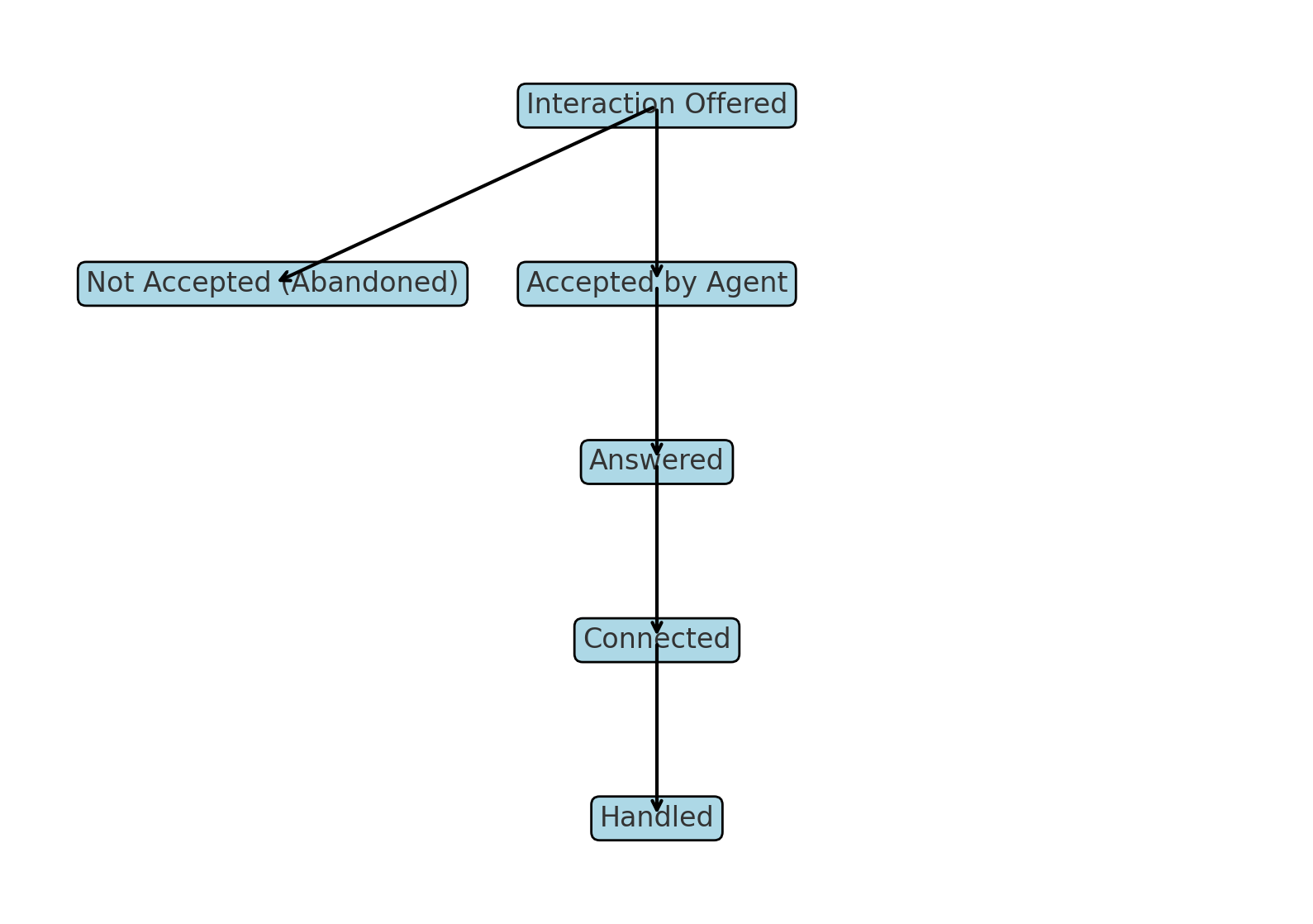What is the Difference Between Offered, Answered, Connected and Handled Metrics?
Understanding Key Interaction Stages in Genesys Cloud

When managing customer interactions in Genesys Cloud, it's crucial to understand the different stages an interaction can go through. Terms like Offered, Handled, Answered, and Connected are frequently used, and while they may seem similar, each refers to a distinct phase of the interaction lifecycle. Let's dive into the meaning of each term with examples and how they impact your contact center metrics.
Offered: Interactions Routed to Agents
Offered refers to the number of interactions (such as calls, chats, or emails) presented to an agent or queue. These are the interactions that the system tries to route to an agent, regardless of whether the interaction is ultimately answered, handled, or abandoned.
Example: Imagine a customer calls into a support line. The system tries to connect the customer with an available agent. As soon as the call is routed to the queue, it counts as an "offered" interaction, whether or not the agent answers the call.
- Offered = 1, regardless of whether the agent picks up the call.
Answered: The Moment an Agent Accepts an Interaction
Answered refers to how many times an agent accepted an ACD (Automatic Call Distribution) routed conversation that was waiting in the queue. Answered interactions count when the agent is the first to connect to the interaction.
In the context of calls, this is when an agent physically answers a phone call. At this point, the interaction has moved from being offered to an agent to being accepted. However, the customer and agent might not be communicating yet (for example, the call might still be ringing, or there may be a slight delay before the call is live).
Example: When the agent sees the incoming call and clicks to answer, this counts as an "answered" interaction. However, the call is not yet connected.
- Offered = 1, Answered = 1, but the conversation has not yet begun.
Connected: The Start of Active Communication
Connected refers to the point when the customer and agent are actively engaged. For a call, this means that the phone line is open and both parties can hear each other. For a chat interaction, it means the customer and agent are typing and communicating in real time.
A connected interaction goes beyond just being answered; it signifies the moment when real communication starts.
Example: After the agent clicks to answer the call and the ringing stops, both the agent and customer can now hear each other. This is the connected stage.
- Offered = 1, Answered = 1, Connected = 1.
Handled: Successfully Completed Interactions
Handled refers to how many interactions an agent participated in, which involved time spent contacting, dialing, talking, placing holds, or engaging in after-call work. A handled interaction can include time spent on after-call tasks such as entering data or following up on the interaction. It increments once the interaction is fully completed, including any post-call work.
Handled interactions could also be completed by automation, such as IVR flows, without ever reaching an agent.
Example: The agent has completed the conversation with the customer, followed by entering notes and closing the interaction. This marks the end of the handled process.
- Offered = 1, Answered = 1, Connected = 1, Handled = 1.
Example Scenario in a Genesys Contact Center
Let’s consider a customer who calls into a support queue. Here’s how the metrics might play out:
- Offered: The call is routed to the queue and is waiting for an agent to pick it up.
- Answered: An agent accepts the call, but there’s still a brief delay before the two parties can speak.
- Connected: Once the call is connected, both the agent and the customer can communicate.
- Handled: After the call ends and the agent finishes post-call work (such as entering notes), the interaction is considered fully handled.
Understanding these key terms—Offered, Answered, Connected, and Handled—is crucial for monitoring your contact center’s performance and improving both customer service and agent efficiency. Each stage provides valuable insights into how interactions are managed. It's also important to track abandoned interactions, which can occur at any stage, whether the interaction is offered, answered, or connected. Monitoring abandonment rates alongside these key metrics helps optimize your team's handling of interactions and ensures a smoother customer experience.
Schedule a call.
Book a call with the Noralogix team. We look forward to talking to you.
